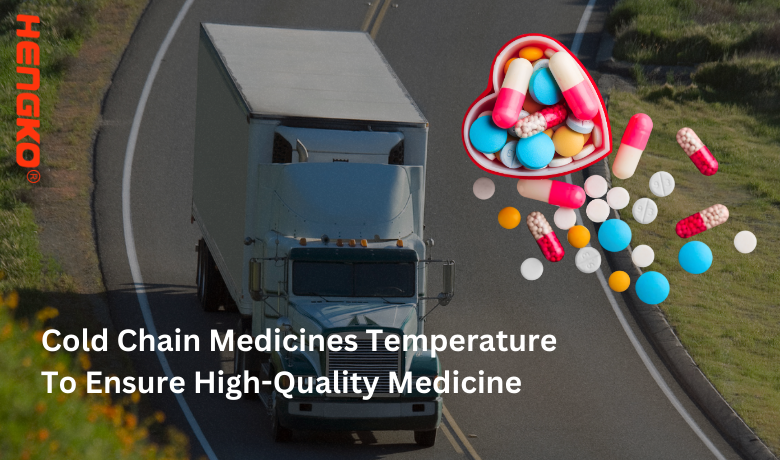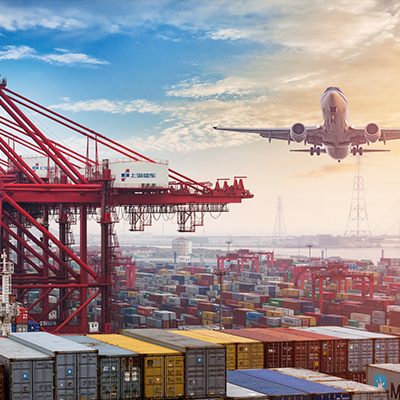Cold Chain Medicines Temperature To Ensure High-Quality Medicine

Cold chain temperature is the range of temperature that must be maintained during the transportation and storage of temperature-sensitive products such as vaccines, biologics, and other pharmaceuticals. It is essential to maintain the correct temperature to ensure the efficacy and safety of these products. Even minor deviations from the recommended temperature range can cause irreversible damage to the products, rendering them ineffective or even harmful to patients.
In this blog post, we will discuss the importance of maintaining cold chain temperature for high-quality medicine, how to control the temperature of cold chain medicines, and how to choose the right temperature and humidity sensor for cold chain medicines.
1. Why Cold Chain Temperature is So Important for High-Quality Medicine ?
The efficacy and safety of temperature-sensitive products are dependent on maintaining the correct cold chain temperature. Deviations from the recommended temperature range can cause irreversible damage to the products, making them ineffective or harmful to the patients. Pharmaceutical companies invest a lot of time and resources to ensure that their products remain within the recommended temperature range throughout the transportation and storage process.
In addition, ensuring the proper temperature of cold chain medicines is also important to meet regulatory requirements. Regulatory authorities such as the FDA and WHO have strict guidelines for cold chain temperature, and failure to comply with these guidelines can result in penalties or even product recalls.
2. How to Control the Temperature of Cold Chain Medicines
Temperature-controlled packaging is the most common approach to maintaining the proper temperature during transportation and storage. These packages use insulated materials and cooling technologies to keep the products within the recommended temperature range, despite external temperature fluctuations.
In addition to temperature-controlled packaging, it is essential to maintain proper storage conditions in warehouses and other storage facilities. These facilities should have temperature monitoring systems in place, as well as backup power sources in case of power outages.
3. What Kind of Temperature and Humidity Sensor is Popular to Use in the Market?
There are several types of temperature and humidity sensors available in the market, including thermocouples, resistance temperature detectors (RTDs), thermistors, and semiconductor sensors. Each type of sensor has its own advantages and disadvantages, depending on the specific application requirements.
Among these types of sensors, industrial temperature and humidity sensors are often preferred for cold chain medicines. They are designed to withstand harsh environmental conditions and provide accurate and reliable measurements. Moreover, they are calibrated to meet regulatory requirements.
4. How to Choose the Right Temperature and Humidity Sensor for Cold Chain Medicines
When selecting a temperature and humidity sensor for cold chain medicines, it is important to consider factors such as accuracy, reliability, and durability. In addition, the selected sensor should comply with regulatory requirements.
Each type of sensor has its own advantages and disadvantages. For example, thermocouples are robust and can measure high temperatures, while RTDs are stable and precise. Thermistors can measure small temperature changes, and semiconductor sensors are small and low-cost.
Industrial temperature and humidity sensors are often the preferred choice for cold chain medicines because they meet regulatory requirements, are designed to withstand harsh environmental conditions, and provide accurate and reliable measurements.
In conclusion, maintaining the correct cold chain temperature is essential to ensure the efficacy and safety of temperature-sensitive products such as vaccines, biologics, and other pharmaceuticals. By using temperature-controlled packaging and reliable temperature and humidity sensors, pharmaceutical companies can ensure that their products remain within the recommended temperature range, meet regulatory requirements, and ultimately, provide patients with high-quality medicines.
Recently, Chinese Center For Disease Control And Prevention | CDC • Chinese Field Epidemiology Training Program Master of Public Health- Huilai Ma shown that the country, province, and city jointly carried out in-depth traceability investigations on the two local epidemics in Beijing Xinfadi Market and Dalian Seafood Company. There are various evidences indicated that the COVID-19 is introduced by cold chain.
In 2019, China imports of goods trade were RMB14.31 trillion. In 2020, Chinese goods trade imports were RMB14.23 trillion, a decrease of 0.7% from last year. Due to the Covid-19 in 2020, the imports fell slightly in China. However, in recent years, Chinese economy and fresh food market have developed vigorously, and Chinese cold chain market has also continued to expand. In addition to market demand, continuous favorable policies have also greatly promoted the rapid development of the cold chain business, and the top 100 revenues have continued to expand.
The mainly problem is that the fast development of cold chain but the short of the supporting infrastructure services. Such as the cold chain transportation. Agricultural products needs to go through picking, sorting, transportation, packaging, cold chain, deep processing and other steps. The vegetable transportation always in a suitable low temperature condition that very low loss rate in the foreign countries with developed cold chain logistics. SMEs cold chain system face equipment breakdown, excessive heat exposure, human errors, damaged goods and higher cost .
Whole-process Cold Chain Logistic Management is essential. HENGKO Cold-chain Transportation IOT solution through the various sensors in the temperature and humidity monitoring system, the collected data is uploaded to the cloud server, and the data is integrated, analyzed and processed through the pre-made plan, so that you can remotely track the temperature and humidity of the product, and ensure that the product is stored at the appropriate temperature And transportation, when the monitoring parameters are abnormal, the response and processing will be the first time.
Looking forward, together
This pandemic has driven investments to improving cold chain logistics and is more important than ever before. There will always be challenges that arise and obstacles to overcome, including new regulations and policies. However, continuing to strive for better technology, building on the lessons learned during the pandemic and pushing ourselves to think three steps ahead will help ensure we meet the moment and collectively deliver this new and exciting future of healthcare.
Don't risk the safety and efficacy of your pharmaceutical products.
Contact us today to learn how our temperature-controlled packaging and reliable temperature and humidity sensors
can help you maintain the proper cold chain temperature and provide patients with high-quality medicines.

